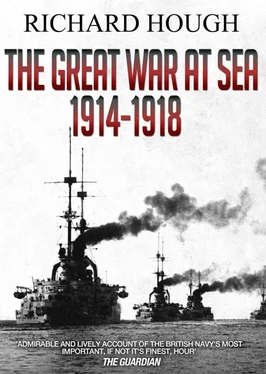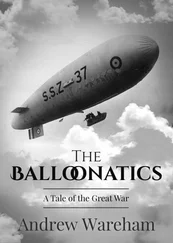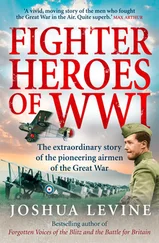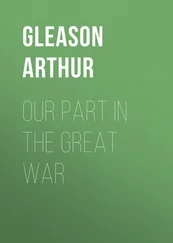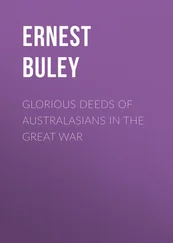Keyes was a phenomenon. Youthful, enthusiastic to the point of boyishness, he had a slight figure and large ears but extraordinary charisma and a love of adventure, always slipping away from the strategists to be at the point of crisis. Like Churchill, he believed in his own lucky star, his own destiny, and was constantly seeking out courageous and determined individuals who enjoyed adventure as much as he did. He kept a copy of Kipling’s poem ‘If’ above his washbasin, and read it through every morning. “To me he was like Nelson in his simplicity, love of danger and greed for glory,” wrote Brodie about him. “He worshipped valour for its own sake…. The most loveable leader I have ever served.”
From his office at Fort Blockhouse, in an old Napoleonic era hulk called HMS Dolphin moored next door, where the Submarine Museum is now, Keyes took the submarine service by the scruff of its neck and fought for the resources and inspirational leaders he wanted, right up to the outbreak of the First World War in 1914. Then he flung his submarines into enemy waters, aware that the old doctrine stating submarines were defensive weapons was quite mistaken. They were offensive weapons or they were nothing.
Keyes was in the habit of sitting behind his commanders as they carried out a practice attack, and said he could feel the confidence of the crew in the man at the periscope. If he felt something different, then the captain would be out. His main struggle in the four years before the war was to launch the new class of E submarines, using the lessons from the D class, and to break the monopoly that the Vickers yard at Barrow-in-Furness had built up in their manufacture. This was difficult and the number of submarines in the navy at the outbreak of war was lower than they had been when he took over, but they were good ones. The first of the new E class were already at sea.
“Before the war, what submarines could do was one mystery,” wrote Winston Churchill in his book The World Crisis . “What they would be ordered to do was another.”
* * *
By the time Keyes had got his feet under the desk at HMS Dolphin , Boyle was preparing to get married. Marjorie Wales Leigh was born in Shortlands, near Bromley and brought up in Beckenham. Her father was a successful stockbroker. A search through the 1911 census finds the family in Tonbridge during Boyle’s Easter leave, with him staying as a guest, and we might imagine that the engagement took place then.
Whether it was then or not, they were married in Marylebone in the summer of 1912, the high noon of Edwardian heroic sentiment, just weeks after the Titanic disaster and the news of Captain Scott’s demise in the Antarctic. Boyle’ parents had recently moved to London (16 Onslow Square), perhaps in the hope of encouraging Courtney’s sisters to find husbands, though – if so – this was not a successful strategy. The war intervened and, like so many other young women of their generation, they never did.
The marriage is important to the story of E14, partly because it was not a success – and partly because it is very clear from Keyes’ letters home that it was Marjorie Boyle he was fond of, and Eva Keyes was especially so. Keyes never entirely trusted the husband, and worried – like other contemporaries – whether Boyle was just too laidback, or whether perhaps he lacked the determination. “I had a shocking suspicion that he was a bit bored by the navy in peacetime,” wrote Brodie later. “He did not pose, but seemed slightly aloof.”
Boyle’s confidential reports were positive, but as late as 1914, his commanding officer wrote that he had a “quiet, nice disposition. Somewhat lacking in authority and confidence. Not at present sufficient enthusiasm & leadership”. But Brodie’s remark that he “did not pose” may be a clue, and that same inability to strike an inauthentic note of action lay behind some of the other disapproval in Boyle’s official reports. What looked like honesty to him might have looked like boredom to his contemporaries and perhaps even to senior officers, despite his evident judgement and technical abilities that were to make his Dardanelles voyages so successful. Perhaps it was this that earned the outburst that Keyes made in a letter to his wife at the end of 1914:
“Addison tells me Boyle is not doing at all well and does not appear to take any interest. It will be awkward if I have to kick him out which of course I shall do – if I am not satisfied. I do wish that babas weren’t staying there!!! You know everyone says the same thing about him. The same when he was at sea in the St Vincent . I never would have given him that ‘E’ but for his first class reconnaissance, but that isn’t good enough; the boat has got to be put in order and kept in order, and that is where he fails – he wants a spur all the time.”
The reference to ‘babas’ usually refers to his children, and the implication is that one of them was staying with Marjorie Boyle at the time. The reference to Boyle’s reconnaissance was for taking his submarine D3 far into the shoal water off Sylt in the first months of the war. It was not that somehow Keyes doubted his courage. “E14 was incessantly hunted,” he wrote after the first Dardanelles exploit, “but it was clear from Boyle’s signals that he was not in the least perturbed, which did not surprise me, as in the whole of my long submarine experience, I never came across anyone more completely oblivious of danger.”
Boyle was the hero then, so we can discount some of this. What we can say is that maybe seeming oblivious to danger was part of the basic problem – that Boyle sometimes seemed oblivious to everything. The impression from other contemporaries is one of overwhelming reserve. “I served with him in 1917 in the Blyth flotilla, and later under him on the West Coast of Scotland,” wrote William Carr in his book By Guess and By God . “Boyle was tall and dark, with slightly greying hair, very reserved and immensely self-contained. Off duty you would find him immersed in some technical book or other most of the time. He had a sense of humour but it never ran away with him.”
It was this technical ability that kept him in the forefront of ‘The Trade’. Driving a submarine required a combination of technical skill and judgement, of carefulness and attention to detail but also daring. If surface ships could go forward or backward, submarines could go up and down and required the balance, the trim, to be perfect as well. Their commanders had to be able to cruise accurately underwater without any means to see or hear outside – this was before the invention of any kind of sonar or listening devices. And those skills would be required so much more for the sophisticated E class, which incorporated the lessons of the D class and became the ubiquitous British submarine design of the First World War, and which were that much bigger than any previous class.
There were 57 E submarines launched by 1916, including two which were given to the Australian navy (AE1 and AE2). While Courtney and Marjorie were getting married, the keel of his submarine was being laid in Barrow-in-Furness. Like the others, E14 would cost just over £105,000 to build. She weighed nearly 660 tons and was 181 foot long – three times the length of the original Hollands. She had two diesel engines for the surface and electric engines that drove when they were submerged, theoretically at the rate of 11 mph but actually rather less. E14 had five torpedo tubes; two in the front, one in the stern and two – though this remained top secret – in the beam. When the A, B and C classes had two officers and maybe a dozen men each, the E submarines had a crew of 30 cooped up in cramped quarters just over 15 feet across.
Читать дальше
